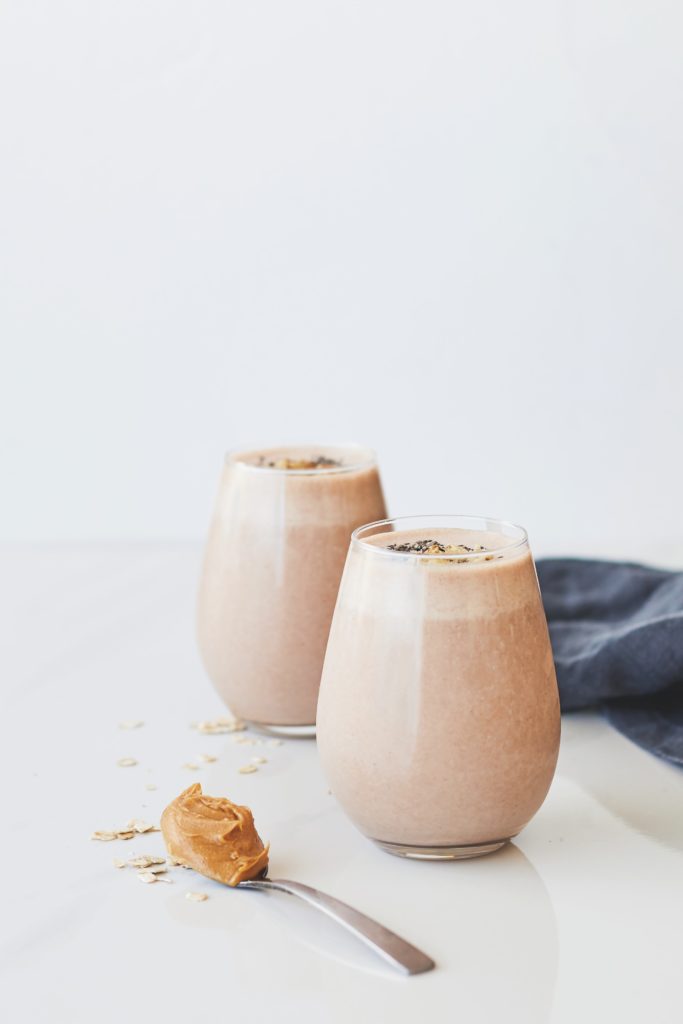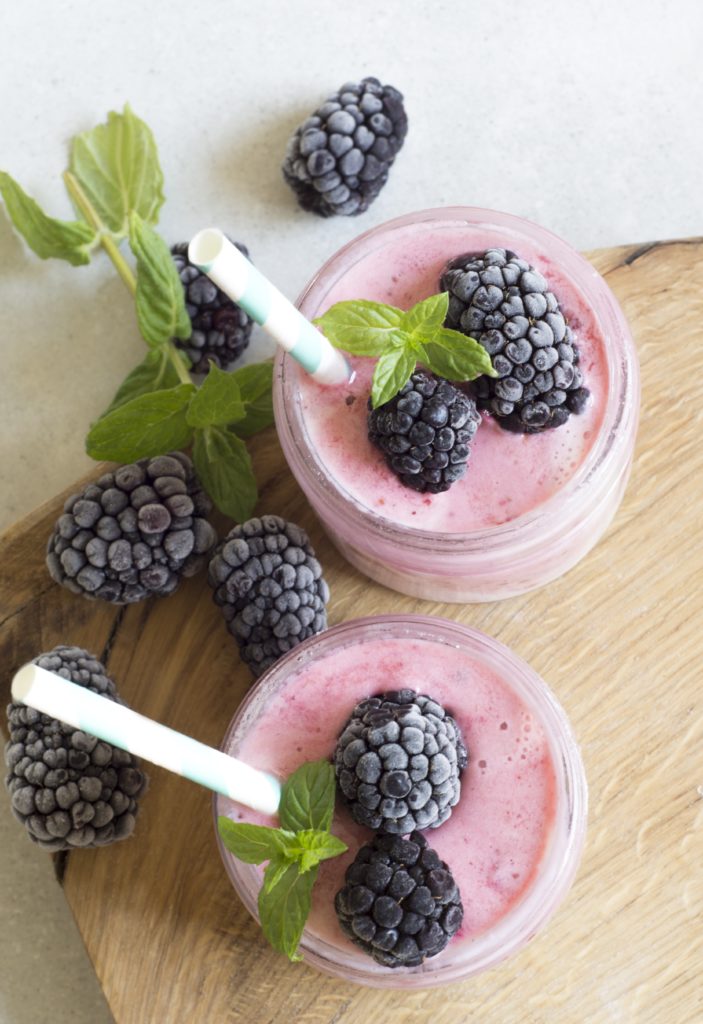Learn how to add protein to your smoothies without using protein powder.
There’s no doubt that protein is an important part of a healthy diet.
Among its many roles, protein helps build and repair body tissues, maintain a strong immune system, and transport and store nutrients. Dietary protein is also key for feeling full and satisfied after a meal, which aids in controlling appetite and maintaining a healthy body weight. For these reasons and more, including a good source of protein at each meal is essential for a well-balanced plate.
However, in North American it is common to have evening meals centered around meat and therefore, to eat most of our daily protein at dinner. Often, inadequate amounts are consumed at breakfast (if breakfast is eaten at all!) and popular breakfast foods themselves, like fruit smoothies, lack significant amounts of protein.
While the obvious solution to a protein-lacking smoothie is to add more protein, there are many ways to do so! Unfortunately, we humans like to jump straight to a quick fix – while supplementing our diet with protein powders may be easy and convenient, it is best to get protein from food. Not only can powders be expensive but they are also missing important nutrients and fiber that are found in food sources of protein.
HOW TO ADD PROTEIN TO SMOOTHIES WITHOUT PROTEIN POWDER
So with that in mind, here are six protein-rich foods you can use to add protein to your smoothies!
Cottage Cheese
While a little unconventional, cottage cheese packs in around 28 grams of protein per cup. With its mild taste, it is a nice alternative to Greek yogurt while still adding thickness and a creamy touch. If you’re still wary, start with a 1/4 cup and adjust accordingly.
Check out this high-protein Strawberry Cottage Cheese Smoothie at From Scratch Fast!
Greek Yogurt
Similar to cottage cheese, a cup of Greek yogurt boats anywhere from 15-25 grams of protein per cup but with a tangy twist. Opt for the plain and full-fat variety to get a great tasting yogurt without a lot of added sugar.
Go Greek with this high-protein Greek Yogurt Smoothie from Well Plated by Erin.
Silken Tofu
At 7 grams of protein per 100 gram serving, silken tofu is a great vegan and dairy-free option for adding protein to smoothies. With its soft and smooth texture, you won’t even know it’s there once it’s all blended up. Plus, you’ll get to enjoy the look on people’s face when you tell them the delicious smoothie they’re drinking has tofu in it! *cue dramatic gasps*
Try this Healthy Blueberry Tofu Smoothie Recipe With Honey from The Spruce Eats.
Milk
Regular dairy milk is an easy and relatively inexpensive protein-rich food. At 8 grams of protein per cup, use milk as the blending liquid in your smoothie for a creamy protein-boost. Not into dairy? Soy milk offers the most comparable nutritional profile among dairy-free alternatives.
Try it here: Fruit and Milk Smoothie Recipe from Taste of Home.
Nut Butter
From peanut and almond to cashew and beyond, there are so many nut butters out there to try. Not only do they add 3-4 grams of protein per tablespoon but some great flavour nutty flavour too. Blending whole nuts into your smoothie is also an option, but it will probably only work well with a high-powered blender.
Give nut butters a go with this Strawberry, Banana and Almond Butter Smoothie Recipe from Chef Nate Appleman at Food & Wine Magazine.
Seeds
Adding seeds to a smoothie is a great plant-based protein option for those with allergies to nuts or soy. Try using chia, hemp, flax or even pumpkin seeds. All you need is a tablespoon to give your smoothies a boost of 1-3 grams of protein.
Check out this vegan and gluten-free Cinnamon Roll Smoothie featuring hemp seeds from Hannah Magee, Registered Dietitian.
THE BOTTOM LINE
Using protein powder in smoothies may be an easy and convenient way to add protein to smoothies; however, in doing so you miss out on the additional nutrients and fiber that whole foods provide. Instead, try using one or more of the strategies listed above to make protein-packed smoothies that keep you full and support your health without using protein powders.
Which will you try first?
MORE BLOG POSTS
- Dairy vs Non-Dairy Milk: How Do They Compare?
- Phytonutrients for Health: Eat the Rainbow!
- Top Nutrition Trends of 2022 According to Dietitians
CONNECT WITH ME!
Did you like this article? Have a question? Comment below and I’ll be sure to get back to you. Don’t forget to follow along on Instagram so you never miss a new blog post or recipe!


